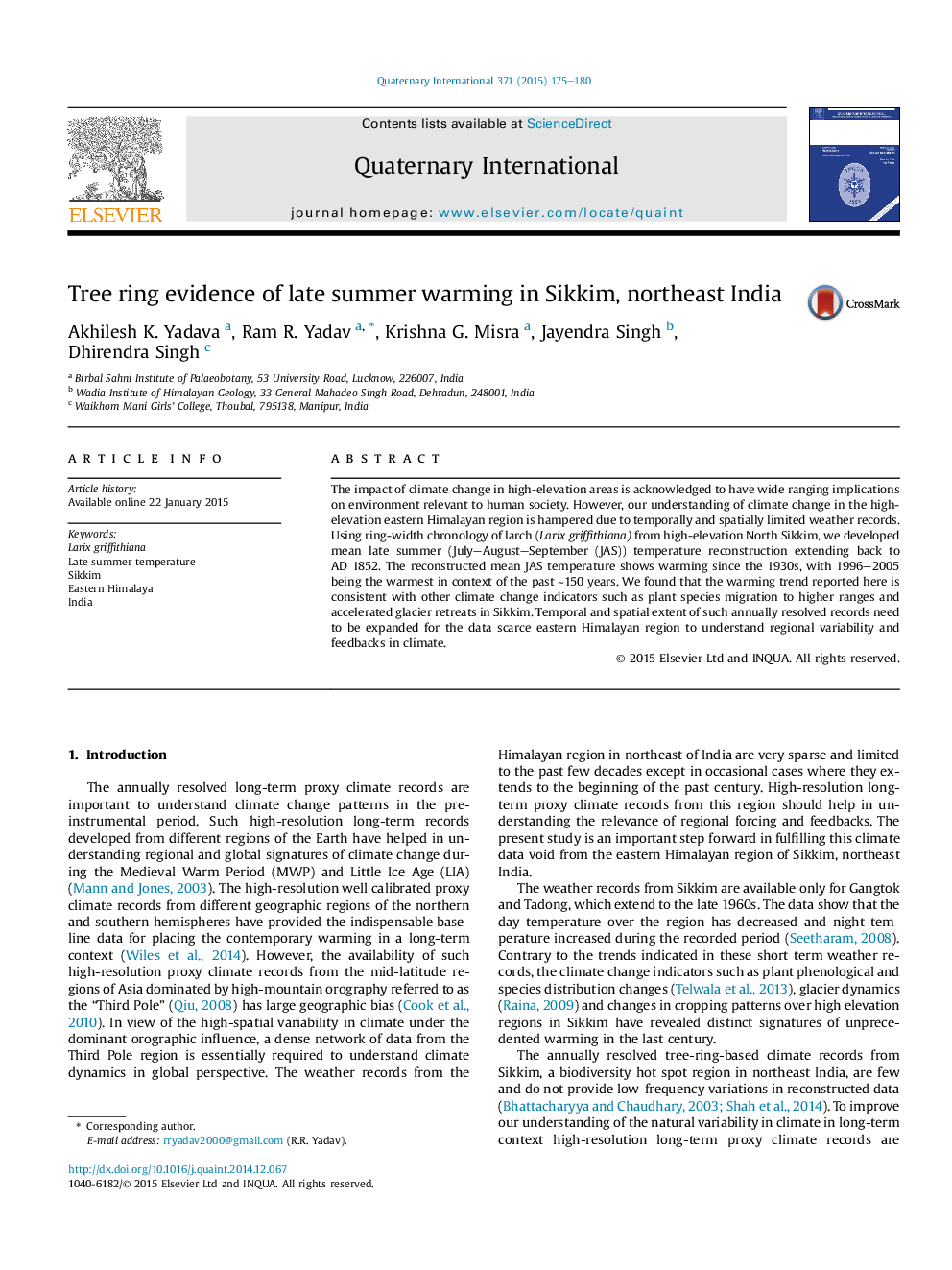| Article ID | Journal | Published Year | Pages | File Type |
|---|---|---|---|---|
| 1040789 | Quaternary International | 2015 | 6 Pages |
The impact of climate change in high-elevation areas is acknowledged to have wide ranging implications on environment relevant to human society. However, our understanding of climate change in the high-elevation eastern Himalayan region is hampered due to temporally and spatially limited weather records. Using ring-width chronology of larch (Larix griffithiana) from high-elevation North Sikkim, we developed mean late summer (July–August–September (JAS)) temperature reconstruction extending back to AD 1852. The reconstructed mean JAS temperature shows warming since the 1930s, with 1996–2005 being the warmest in context of the past ∼150 years. We found that the warming trend reported here is consistent with other climate change indicators such as plant species migration to higher ranges and accelerated glacier retreats in Sikkim. Temporal and spatial extent of such annually resolved records need to be expanded for the data scarce eastern Himalayan region to understand regional variability and feedbacks in climate.
